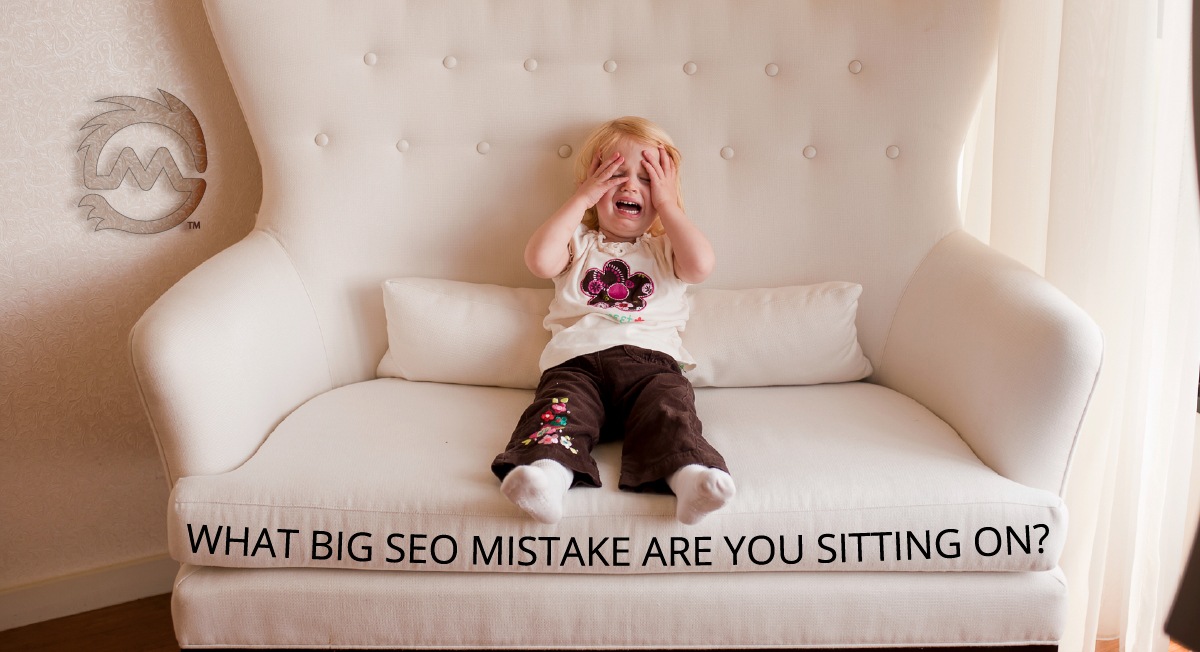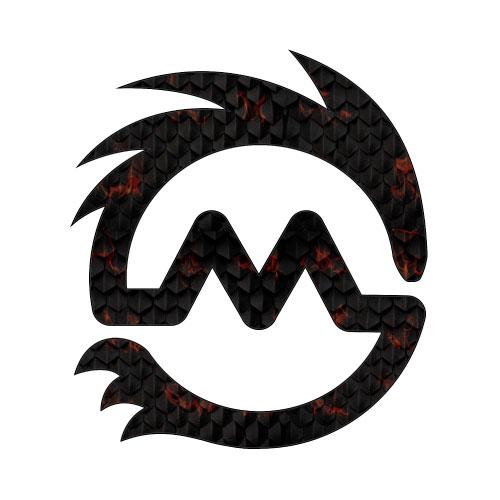Word count: 1,900 Technical Level: Intermediate Reading time: 6.91 Mins
SEO is constantly in a state of flux and forever evolving. To be an SEO professional you not only need to keep up with what is working now, but you need to see what could work in the near future. The sad fact is most SEO professionals are one trick ponies, radically out of date, using poor sources to learn from, no actual technical expertise and execution or have never had the budget or volume of clients to get the in the trenches experience. The end result: they are experts of online marketing nostalgia, still focusing on meta tags and keyword optimising websites.
Running with SEO or an SEO professional still focused on keyword optimising for your site is a grand mistake. Let me cover some of the commonly made SEO mistakes that can cost you big dollars and even put you out of business.
No analytics
I’m shocked at how many companies do not use any type of analytics for their web presence. You can’t improve what you don’t measure. Likewise, what gets measured gets improved. You must use some type of analytics to track what happens when users visit your site. Google analytics should be the bare minimum. You should also be tracking your social media posts and engagement. No one program seems to do it all at the moment, so I would recommend; Google analytics (better still Google 360), Facebook insights, Buffer, web master, Seo Profiler, heat map, MOZ tools, Even lipperhey is quite good.
Overlooking the power of Google Business
Trying to get your website ranked well on SERPs without a Google business listing is like trying to build a house without a foundation. With a recent abrupt surge in “near me” search trends, getting your business listed in Google Maps can be crucial when it comes to being seen in your local market. It takes very little effort to setup and can be a major turning point for many local businesses.
Focusing on Keywords and meta
Google does not use keyword meta data and hasn’t done for a long time. Stop wasting your time putting ‘T Shirts, Custom Tshirts, Black T Shirts, Kids T shirts, Cheap T Shirts, Colour T Shirts’ in your meta tags. It never worked! and it certainly dosn’t work now. If you hear someone talking in these terms, turn and run in the opposite direction.
Not correctly naming or branding images
Image search is used just about as much as normal search. When you consider this, are you helping yourself leaving your gallery, slider, page images named IMG34437.jpg or similar. Therefore, couldn’t you give yourself a nice competitive edge by explicitly naming your images?
IMG344437.jpg could be ‘grout-cleaning-services-gold-coast.jpg’ just make sure you are being accurate. Some images may even benefit you if they have your web address, logo and phone number. There is no point in naming images with irrelevant information. SEO can truly be a game of inches in the beginning and this could be the difference between page one and page 2 or a good month and a crapp one.
Lack of explicit use of the right search terms in your website copy
Search terms ( a little different, but similar to keywords) are the elements that tie your website with what users search for online. This is one of the reasons why trending search term research is regarded as a top priority SEO activity. It is not enough to be a cleaner on the Gold Coast and place ‘Cleaner Gold Coast’ in your meta tags.
It is also likely not enough to only have a couple lines of text that don’t even mention your product or services. You need to get off your butt and put down what you actually do. Describe your service fully and in detail. To ensure you are using the words and terms that your customers will use the best thing to do is do some search term research.
There are some great tools online like Ubersuggest, Googles Keyword Planner, Buzzsumo for performing search term research. It is very important to use these tools, you can find new areas to market to and new twists on terminology. For example, you may be pushing the search terms domestic electrician for your business. It seems like a smart choice after all most other electricians are using the same terms. However, when you do some search research, you find Residential Electrician is almost as commonly used as domestic electrician. However, the competition from other electrical websites for the term was significantly lower. Additionally, the search terms use was trending up over the last 2 years and domestic electrician was trending down. (This was a real world example from last month).
Most people are too busy to use more than one tool and end up optimising their website with the wrong search terms, mainly due to laziness. Be though and don’t forget to make sure you are using terms your target market would use. Old customers use different terminology than younger ones. Just this month we discovered older clients in the dental market are using totally different terms from what is used today. Also, we generally find a difference in use between BING and Google. For us we find this difference to be one of general tech-savviness and I’ll explain. PC users with a low level of technical skill are normally still using Internet Explorer or Edge which defaults to BING as the search engine. So if you believe your average client is low on the tech savvy scale then you should pay close attention to the search term results in BING, over what may come up in Google.
You have broken links
This is a big negative in SERPs. Not to mention a sloppy look to customers. I can’t believe how many businesses will create great content or have ranking pages and then just change them without redirecting them. Everyone from big to small companies are guilty. Right now I’m looking at two dead links from istockphoto.com that rank in google and guess what? I’ll now be going straight to Shutterstock. Don’t let this be your business take the time to redirect the pages to the new content or to somewhere other thank 404 error or a dead page.
Lack of unique or just weak content
I’ll preface this section with this comment, it is better to have something than nothing almost every time. You should always take the time and effort to create something over nothing. Yes, the goal should be perfection and groundbreaking uniqueness. However, there are few people who can do that from day one. Most groundbreaking content providers have started from humble beginnings and learned their way to greatness. Screwing up is part of the process. So I say don’t worry if your spelling and grammar drops a little, don’t worry your images are crap just get it done first. Get in the habit of getting it done then work on improving each post, vblog, image etc a little bit each time.
Improvement is great for clients to see. You can say hey we started a little rough, but look at where we are now. Did you enjoy the journey with us, as much as we did? Few things are more endearing than, putting it all out there and showing the world the path you have followed.
Creating content is a process and if you are in the just get it done stage look at other leaders in your niche from around the world and mimic what they are doing. Remember mimic don’t carboncopy. Plagiarising other people’s work will only hurt you in SERPs. However, grabbing content from a few good sources and re-writing the content into your own words is a great way to learn. Hunter S Thompson used to re-type books by great authors to learn and this is not to dis-similar.
If you are wanting to create great content to really get somewhere. This is a great technique I learned from Rand Fishkin from Moz.com. Rand states from their research good, great and unique are not enough anymore (Mozcom, 2016). Rand continues to say that your need to be many times better, ten times better(Mozcom, 2016), than the best content in your niche. Rand says a good goal is to be ten times better than the best content under the search term you’re trying to hit. I think this is unrealistic for a lot of small business owners, but not unobtainable once you have a lot of practice or can afford to hire the right people (like us Mebsites.com ).
So for a small operate quality is always key, but more important is getting it done. From there it is a process of improvement and increasing confidence in the quality of your work. Once you get to that solid place go for it and be that ten times better blog.
Note: As a guide, 300-500 word blog posts are enough, but longer blogs are still highly effective and carry more influence, in regards to SERPs ranking. Please remember 300-500 words of concise quality work is a lot better than 2000 words of wuffling dribble!
Overlooking mobile responsiveness
Long gone are the days where a majority of the masses visited websites via a desktop PC or a laptop. This is the era of varying screen sizes and if your website is not optimised to be responsive you are in trouble. Plan a mobile responsive website from the start and follow a mobile first approach. It is not unusual now for us to be asked to build a site to be solely optimised for mobile, with no care for desktop at all.
Search from mobile is basically a separate category all together now. If your not mobile friendly you will be missing out big time.
Note: A large part of mobile friendliness, is image optimising and loading speed. It is not enough to just past the google mobile friendliness test. You need to be visually and functionally right for your users too.
Poor website loading speed
Website loading speed is one extremely important and overlooked factors influencing your website’s position in SERPs. Search engines negatively rank slow loading websites period, no maybes, no they might…I can tell you they do. Furthermore, users have no patience for your 30-40 second loading eCommerce store, they are outta there at the ten second mark. Therefore, ensure that you follow the website development rules listed below when creating your website
- Enable server side browser caching
- Optimize images, possibly by lossless compression technique (Kraken.io is our favourite).
- Make sure images are cropped to just below their maxmium required size, 10-20% is a good guide.
- Use a server which will resize and cache images
- Use CSS to take advantage of server-side resources and caching
- Prune down HTTP requests
- Host resources externally, such as; Fontawesome, bootstrap, fonts
- Use web fonts don’t use desktop fonts.
- Optimise code, especially CSS, minify it
Use a tool like Google Page Speed Insights for checking your website load speed and recommendations. Other notable tools are; Webpagespeed.org and tools.Pingdom.com speed tool, gtmetrix.com
Consider all these factors and ensure that your website landing pages are faultless when it comes to delivering a better user experience. Keep yourself updated with the latest changes in the SEO jargon to stay ahead in the game.
Bibiliography:
Mozcom. (2016, 18th March 2016). How to Create 10x Content – Whiteboard Friday. [Weblog]. Retrieved 6 August 2016, from https://moz.com/blog/how-to-create-10x-content-whiteboard-friday
Reliablesoftnet. (2013, 18 April 2013). 10 SEO mistakes that weaken your rankings. [Weblog]. Retrieved 21 July 2016, from https://www.reliablesoft.net/10-seo-mistakes-that-weaken-your-rankings/
Wordtrackercom. (2016, no-date). Top 10 shameful SEO mistakes. [Weblog]. Retrieved 21 July 2016, from https://www.wordtracker.com/academy/learn-seo/getting-started/seo-mistakes
Betoplocalcom. (2016, no-date). 7 SEO Mistakes That Leak Money From Local Businesses. [Weblog]. Retrieved 21 July 2016, from https://www.betoplocal.com/local-business-seo-mistakes/


